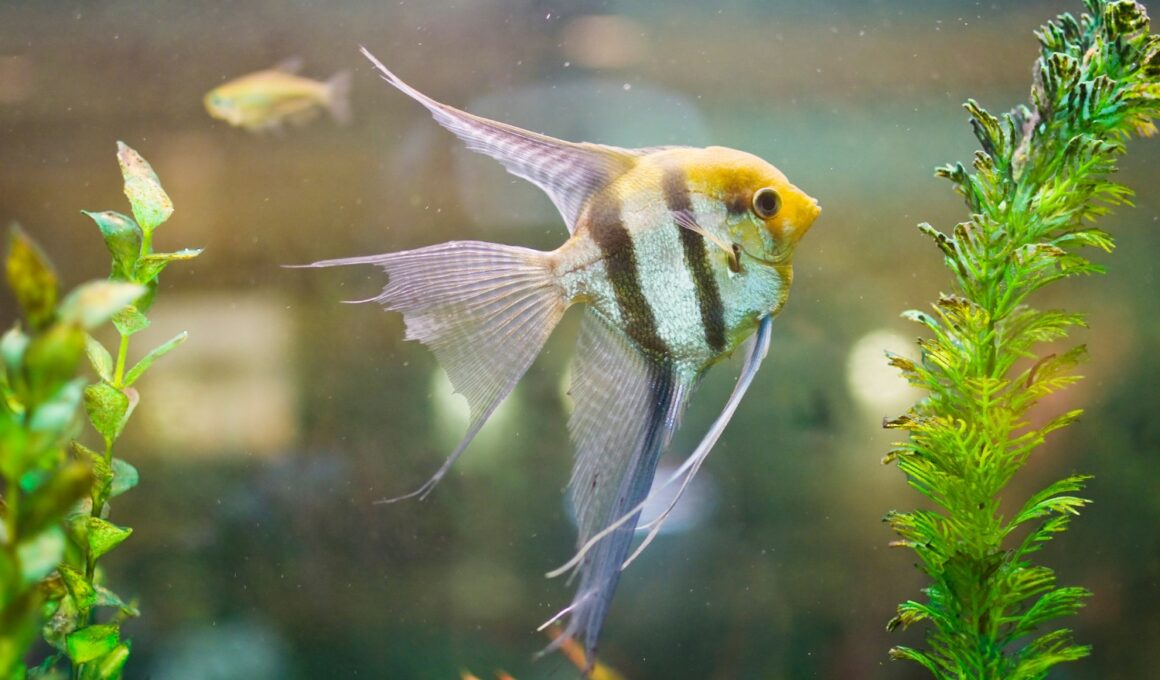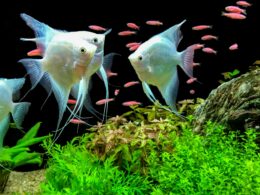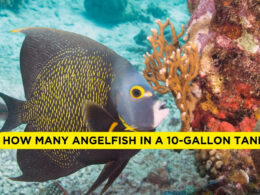In this article Show
As an experienced fishkeeper, I understand the nuances and requirements of creating a thriving home aquarium. Angelfish, with their elegant appearance and dynamic personalities, are a favorite among aquarium enthusiasts. However, their care goes beyond mere aesthetics.
This guide is tailored to help you understand the ideal number of angelfish for a 75-gallon tank, ensuring their health and happiness. A 75-gallon tank offers a substantial environment for angelfish, but how many should you keep? It’s not just about the number; it’s about understanding the balance between space, resources, and the nature of angelfish.
We’ll explore these aspects, providing practical advice for both new and seasoned fishkeepers. Our aim is to equip you with the knowledge to make informed decisions, ensuring your angelfish thrives in a spacious, healthy, and harmonious aquarium environment.
How Many Angelfish In a 75-Gallon Tank?
A 75-gallon tank can comfortably accommodate up to six angelfish. This capacity allows each angelfish to have ample space to swim and establish territories, essential for their well-being. In a 75-gallon aquarium, maintaining this number of angelfish ensures a harmonious environment, balancing their social nature with their need for personal space.
The Significance of Tank Size in Fish Health
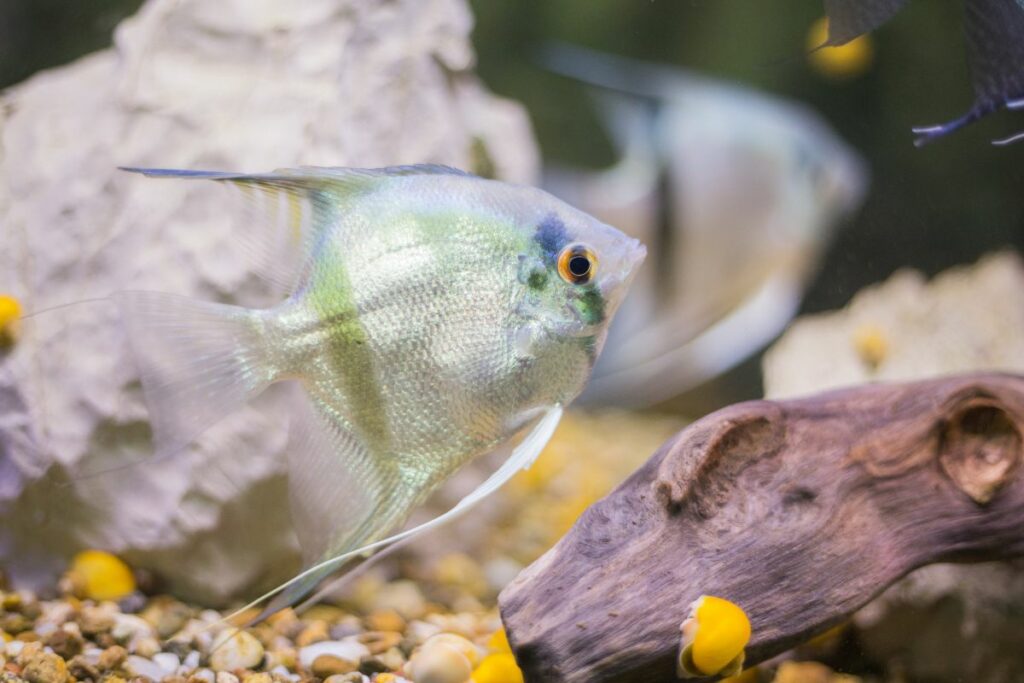
General Principles of Tank Size and Fish Health
The size of an aquarium is a critical factor in the health and well-being of fish. A fundamental principle is that larger tanks provide a more stable environment. Fluctuations in water parameters like temperature, pH, and ammonia levels are less drastic in larger volumes of water, reducing stress on the fish.
Additionally, adequate space prevents overcrowding, which can lead to increased aggression, competition for resources, and the spread of diseases. A spacious environment also allows for more effective filtration and better water quality, both of which are essential for the health of your aquatic pets.
How Tank Size Affects Angelfish Specifically
When it comes to angelfish, tank size plays an even more crucial role. These fish are known for their territorial behavior and need sufficient space to establish personal territories. In a cramped environment, angelfish can become overly aggressive, leading to stress and potential harm to themselves and their tank mates.
A larger tank, like a 75-gallon one, provides enough room for angelfish to swim freely and display natural behaviors. It also allows for a well-structured environment with plants and hiding spots, mimicking their natural habitat, which is key to their psychological well-being.
Furthermore, a larger tank accommodates the vertical swimming space that angelfish prefer, ensuring their long-term health and vibrancy.
Ideal Conditions for an Angelfish Tank
Creating the right environment in a 75-gallon tank is vital for the health and happiness of angelfish. These fish thrive in water with a pH level ranging from 6.8 to 7.8, and a hardness between 3-8 dGH. It’s crucial to maintain these water parameters consistently.
Temperature is another key aspect; angelfish prefer warmer waters, ideally between 76 to 82 degrees Fahrenheit (24 to 28 degrees Celsius). Regular monitoring and a reliable heater are essential to keep the water temperature within this range. Adequate filtration is necessary to maintain clean and oxygen-rich water, while gentle water flow mimics their natural riverine habitat.
Recommendations for Plants, Substrate, and Decorations in a 75-Gallon Tank
When setting up your 75-gallon tank for angelfish, consider these elements:
1. Substrate
A dark or neutral-colored substrate can help make your angelfish’s colors stand out. Sand or fine gravel works well, providing a natural look and comfortable surface for any bottom dwellers.
2. Plants
Angelfish benefit from a planted tank, as it resembles their natural environment. Opt for a variety of plants like Amazon swords, Java ferns, and Anubias. These plants offer hiding places and reduce stress in angelfish. Floating plants can also be used to diffuse lighting, which angelfish appreciate.
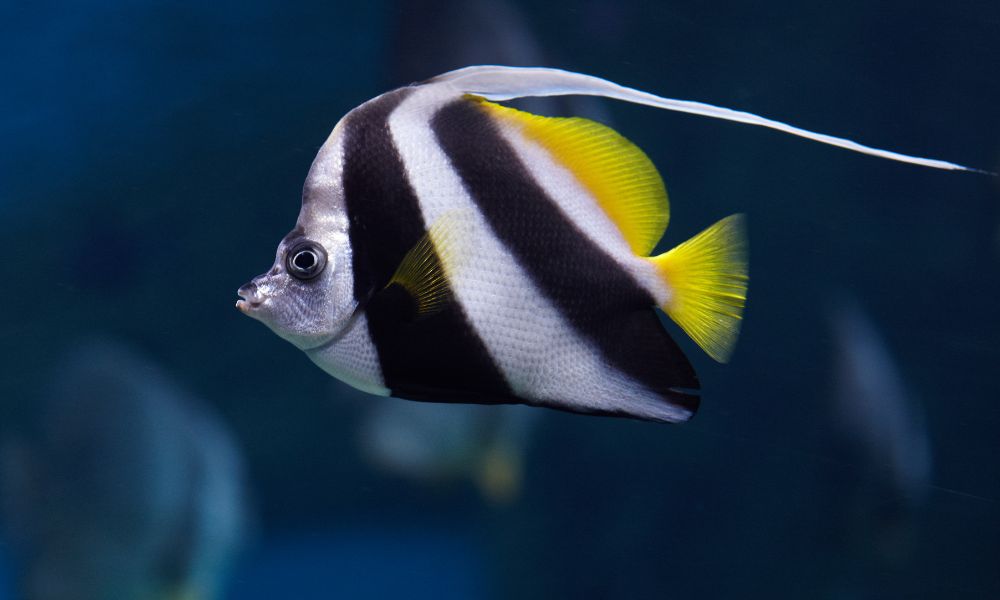
3. Decorations
Include decorations that offer additional hiding spaces, like driftwood, caves, or specially designed aquarium decor. Ensure that any decoration does not have sharp edges to prevent injury to the angelfish’s delicate fins.
4. Layout
Arrange the plants and decorations to create open swimming areas as well as secluded spots. This layout helps in mimicking their natural habitat and caters to the territorial nature of angelfish.
Common Mistakes to Avoid with Angelfish in Large Tanks
Overcrowding and Its Consequences
One of the most significant mistakes in angelfish care, especially in large tanks like 75-gallon, is overcrowding. While it might be tempting to add more fish due to the size of the tank, it’s crucial to resist this urge. Overcrowding can lead to several issues:
- Stress and Aggression: Angelfish are territorial and require personal space. Too many fish in a tank can lead to increased aggression and stress, affecting their health and lifespan.
- Poor Water Quality: More fish means more waste, which can deteriorate water quality despite good filtration, leading to health problems like fin rot and infections.
- Disease Spread: In an overcrowded tank, diseases can spread rapidly, often with devastating effects on the entire tank population.
Other Common Errors in Angelfish Care
- Inadequate Filtration: Underestimating the need for efficient filtration is a common mistake. A powerful filter that can handle the tank’s capacity is essential for maintaining water quality and clarity.
- Improper Feeding: Overfeeding or feeding inappropriate food can harm angelfish. They require a balanced diet of high-quality flakes, pellets, and occasional live or frozen foods like brine shrimp or bloodworms.
- Neglecting Water Changes: Regular water changes are crucial. Neglecting this can lead to the buildup of harmful nitrates and phosphates, which can stress and harm your angelfish.
- Ignoring Water Parameters: Failing to regularly check and adjust pH, temperature, and hardness levels can create an unsuitable environment for angelfish. Sudden changes in these parameters can be particularly harmful.
- Mixing Incompatible Species: Not all fish are good tank mates for angelfish. Introducing incompatible species can lead to bullying or stress. Research and choose tank mates that are peaceful and of similar size and temperament.
Avoiding these common mistakes will greatly enhance the health and well-being of angelfish in your aquarium. Remember, consistent care and monitoring are key to maintaining a healthy and harmonious tank environment.






